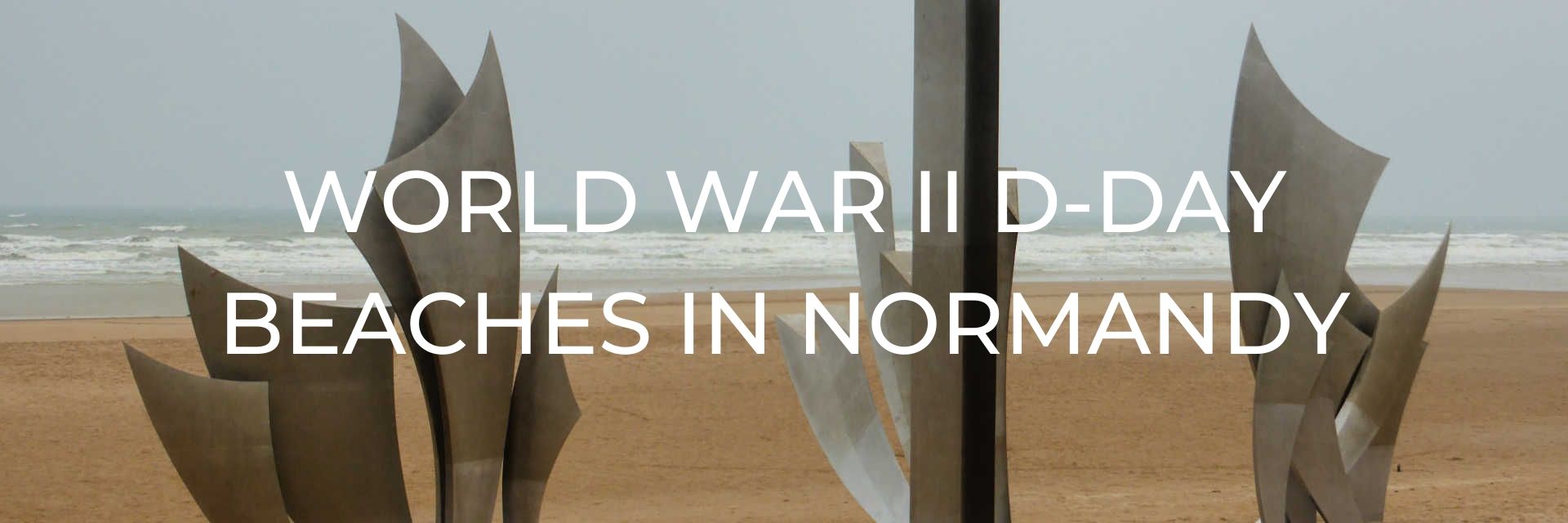
The D-Day landings were the largest seaborne invasion in history, the primary focal points of the landings were the five zones or beaches that the landings were segregated into. Despite the landings, the massive aerial and naval bombardments before and during the landings and paratrooper assaults to take key locations behind enemy lines, the allies failed to achieve any of their goals on D-Day. Major towns remained in enemy hands, only two of the five beaches were linked up and the battle was far from won.
Today the beaches mostly look like beaches anywhere else in the world. The waves crash ashore, the tide washes the sand twice a day and people play, walk their dogs and enjoy the open space. It’s hard to imagine just how different it would have been decades ago when all hell broke loose as D-Day started and a second front was opened in Europe against the Nazi’s.
A map showing the location of the D-Day beaches can be found at the end of the post.
Want to save this for later? Click the Pinterest button on the left for a pinnable image!
This post may contain affiliate links. Please read our full disclosure policy here.
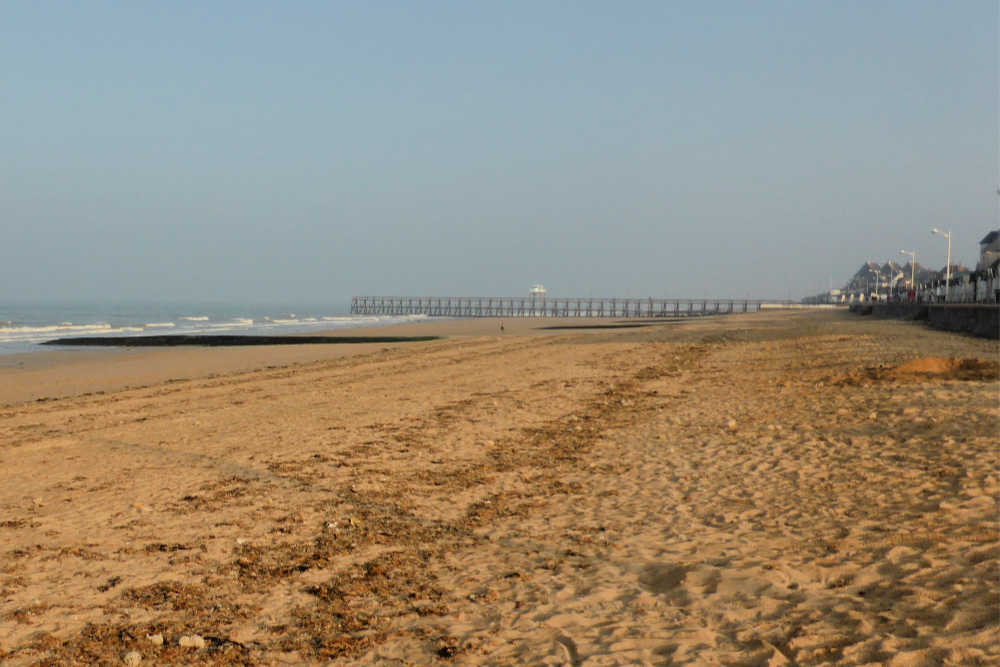
Sword Beach was the furthest east of the five beaches used on D-Day and was assigned to units of the British 2nd Army. The goals were to secure the eastern flank alongside the taking of the bridge over the Caen canal and capture the town of Caen.
The aerial and naval bombardment began at 3:00 am and the landings started at 7:25 am. Despite strong resistance, by 9:30 am most of the fighting around the beach was over and seven of the eight exits from the beach were cleared by engineers. By 1:00 pm that day the soldiers had met up with the paratroopers at the bridges over the Orne waterways, but on the right were unable to link up with the Canadian troops from Juno Beach.
At 4:00 pm the 21st Panzer Division (German) launched an attack but it wasn’t to last long. With its commander in Paris and Rommel in Germany, the delay in organising a counter-attack proved critical and the eastern attack towards the Orne bridgehead was stopped relatively quickly. The western attack managed to make it the coast between the attacking Canadian and British forces. But with no support and suffering losses from allied aircraft, they soon retreated.
By the end of D-Day, the British had 29,000 men landed with 630 casualties. German casualties were much higher and many German soldiers had been taken prisoner, but the Caen objective was still several kilometres away.
Reviews of Sword Beach | 14880 Colleville-Montgomery
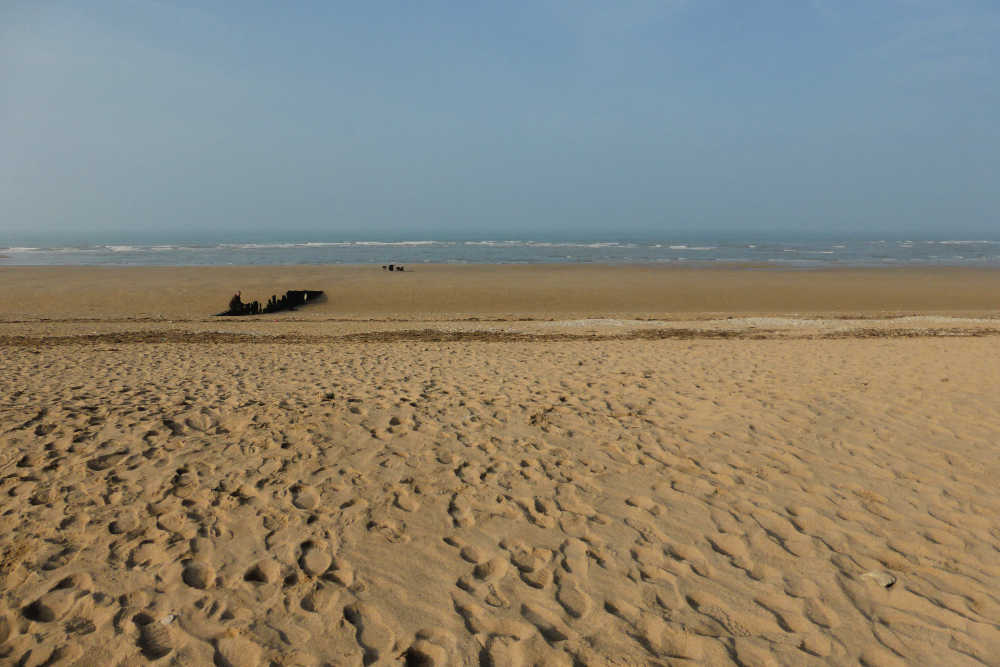
Juno Beach is the beach the Canadians landed on that proved a military success but costly in terms of men lost. The main task of the Canadian 3rd Infantry Division upon landing was to move inland to cut the Caen-Bayeux road and form a connection between the British beaches, Gold and Sword.
Despite heavy aerial bombardment from 230 Canadian bombers until 5:15 am, damage to the defences at Juno Beach was limited. The naval bombardment, led by HMS Belfast, had more success and knocked out batteries in advance of the landing force arriving. The bombardment was due to cease just prior to the landing forces arriving at the beach, however, rough seas delayed their arrival leading to a short break in the attack.
The plan was to land at low tide so the German defensive obstacles would be exposed but the low tide was three hours prior to their landing so they were partially submerged. The mines took a toll on the landing craft and destroyed or damaged 30% of them. The men, after wading ashore, were then met with heavy firepower with an estimated 50/50 chance of surviving the gunfire. The hordes of reinforcements landing on the beach together with tanks and artillery meant that the troops secured the beach and began to push inland within an hour of first landing.
After fighting hard for Juno Beach they reached the German positions behind the beach and were able to move inland with some speed to reach their target by the end of the day. The price they paid was 1,200 casualties of the 21,400 men that landed on the beach. The Canadian landing forces made the most progress of any of the five beaches and came closest to meeting their D-Day objectives.
Reviews of Juno Beach | Voie des Français Libres, 14470 Courseulles-sur-Mer
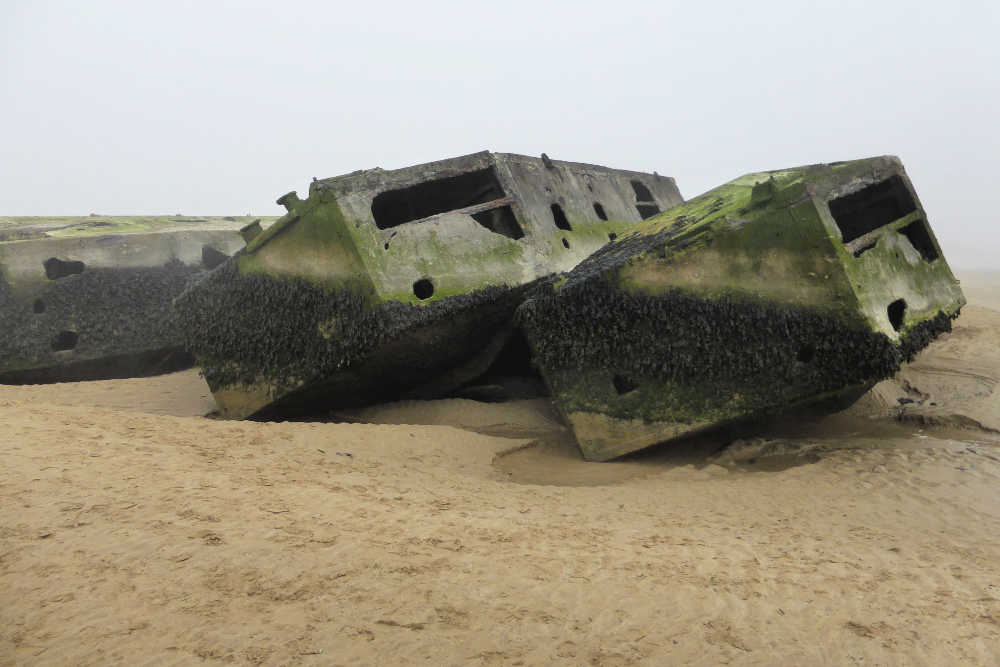
Gold Beach is the central one of the five beaches and where the Allies planned to build one of two artificial harbours to assist with reinforcements should a bridgehead in Europe be successfully established.
Aerial bombing of the defences at Gold Beach started at midnight with naval bombardment joining in from 5:30 am. Batteries at Mont Fleury and Longues-sur-Mer were mostly put out of commission aiding the landings that started at 07:25 am.
High winds made the getting the landing craft to the shore treacherous and amphibious tanks ended up being unloaded much closer to the shore than intended. Infantry fought house to house to clear the fortified homes overlooking the beach before they could move further inland.
Despite their best efforts, the British did not take Bayeux on D-Day as planned, but the town fell the next day. The attacks on the Mont Fleury battery led to the only Victoria Cross awarded on D-Day to bestowed on Sergeant Major Stanley Hollis for his actions attack two pillboxes at the battery.
It was on the beaches of Arromanches that the Allies established an artificial temporary harbour that allowed them to unload heavy equipment before the deep ports of Le Havre and Cherbourg could be captured. Towed across the English Channel in pieces before being assembled off the beach, the harbour allowed ships to unload their cargo in deep water.
During 100 days of operation this “temporary” port allowed 2.5 million men, 500,000 vehicles, and 4 million tons of material to come ashore. To say this was an amazing engineering feat is an understatement.
TOP TIP: Check the tide times for Arromanches on the day of your visit as the remains of the Mulberry harbour are easily accessible on the beach at low tide.
Reviews of Gold Beach | 14114 Ver-sur-Mer
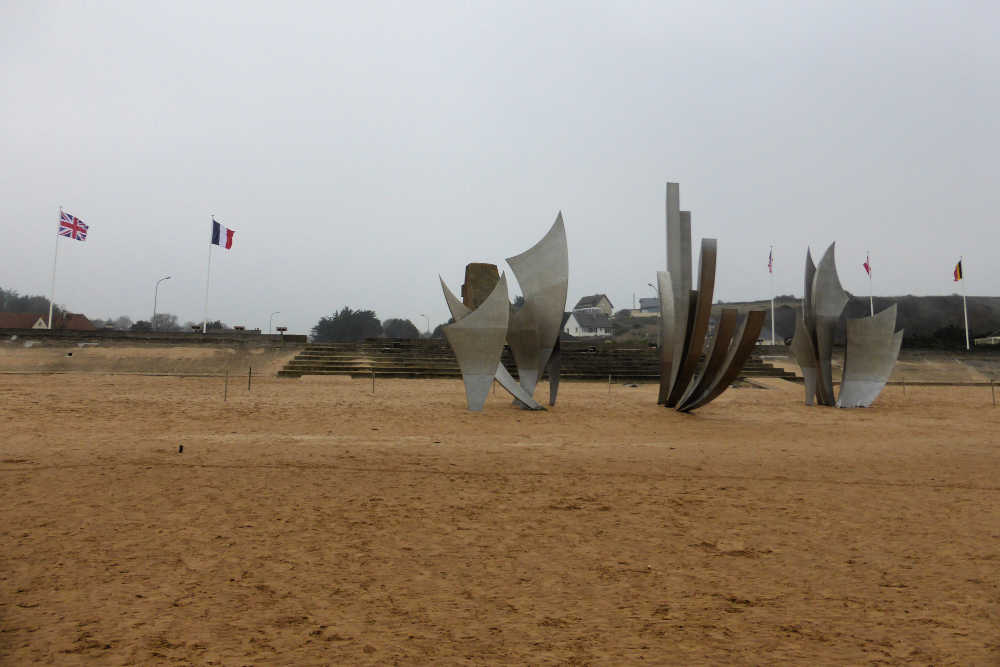
Omaha Beach is a six-mile stretch of beach overlooked by cliffs that made it very difficult to attack for the Americans on D-Day. In addition to the cliffs, the Germans had built intimidating defences around the beach with things like ‘dragon’s teeth’ which were designed to take out the bottoms of landing craft and in case they didn’t work they were mined as well. Gun emplacements covered the beach and there was a system of trenches in places to allow the German troops to move about.
Tasked with attacking this beach were troops from the US 1st Army and their plan was to land infantry troops along with Sherman tanks to give them a lot of fire power against the Germans. However, these tanks never made it as they were released from their landing craft too far away from the beach and all but two of the 29 were swamped and sank. In addition to this, due to strong tides and winds, many of the American troops landed in the wrong place which caused confusion about which unit was where and what they were to do.
The only way off the beach and out of the line of fire from the German machine guns was to sprint across the beach and then scale the cliffs. Some small naval crafts got as close into shore as they could and attacked the German gun emplacements in order to provide some protection to the soldiers on the beach. Despite the odds, by nightfall, the Americans had gained a hold on the beach with 34,000 troops successfully landed. Sadly though it was at a high price as 2,400 soldiers died on Omaha Beach that day.
On the centre of Omaha Beach is the ‘ Les Braves‘ monument for the American soldiers who helped to liberate France. the sculptor Anilor Banon said this:
I created this sculpture to honour the courage of these men: Sons, husbands, and fathers, who endangered and often sacrificed their lives in the hope of freeing the French people.
Les Braves consists of three elements:
The wings of Hope: So that the spirit which carried these men on June 6th, 1944 continues to inspire us, reminding us that together it is always possible to change the future.
Rise, Freedom!: So that the example of those who rose against barbarity, helps us remain standing strong against all forms of inhumanity.
The Wings of Fraternity: So that this surge of brotherhood always reminds us of our responsibility towards others as well as ourselves.
On June 6th,1944 these men were more than soldiers, they were our brothers.
Reviews of Omaha Beach | Avenue de la Libération, 14710 Saint-Laurent-sur-Mer
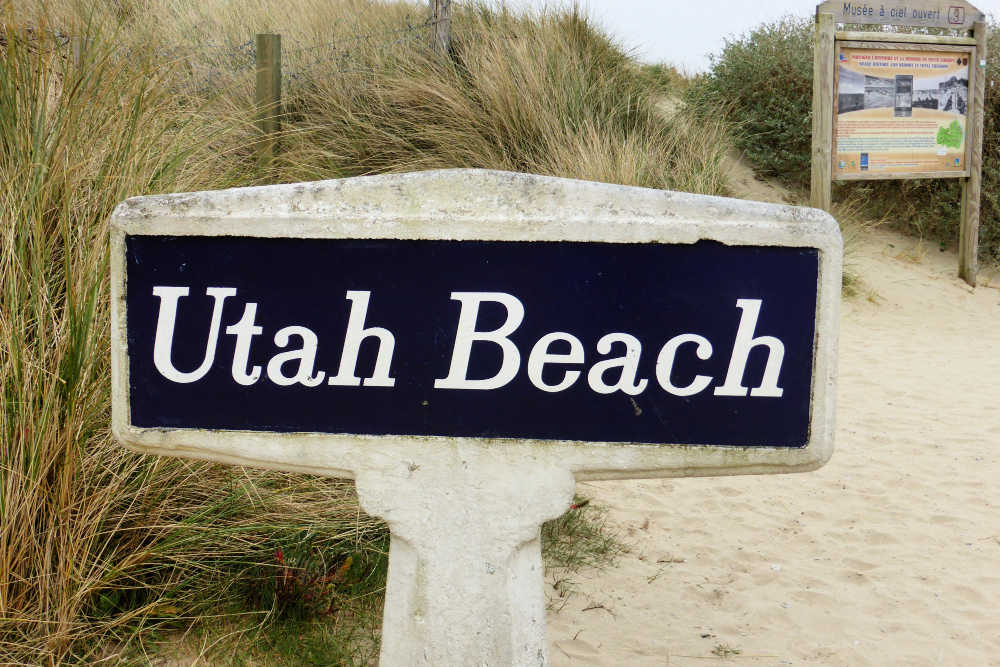
Utah Beach was the code name for the westernmost of the Allied landing beaches during the D-Day invasion of Normandy, as part of Operation Overlord. The US 4th Infantry Division landed on this beach, a little off course, but with relatively little resistance as compared to Omaha Beach that suffered from fierce fighting.
The landing was a success due to several military divisions who played a part in the D-Day landings.
It started at 11:00 PM the night before with the first Allied bombs falling near the planned landing beach. Then at 1:15 AM, 13,000 paratroopers dropped behind the enemy lines with a mission to neutralize German defences, secure the landing area, and prevent the arrival of German reinforcements.
Naval Forces
At 5:36 AM the Allied fleet of battleships, cruisers, and destroyers launched an uninterrupted barrage of fire at the German defences along the coast and even further inland to the Crisbecq and Azeville batteries. One German soldier noted upon seeing the armada as the sun rose that “The sea was black with ships.”
Air Forces
From 6:10 to 6:25 AM all along the coastline was pounded with the bombs from B26 bombers. The timing of this operation was critical because with only five minutes to spare the first landing craft were due to arrive at 6:30 AM and going off schedule at all would put those troops in danger of friendly fire.
One of the men, Major Dwight Dewhurst, led the final bombing run over Utah Beach. In the Utah Beach Landing Museum, an original B-26 is painted in the colours of his plane called the “Dinah Might“. Major Dewhurst was born in San Antonio, TX and enlisted in the Air Force six months before the attack on Pearl Harbour. Over the course of WWII, he accomplished 85 combat missions against the Germans but sadly, shortly after returning home to Texas after the war he was killed in a car accident and left behind his wife and two young sons.
Land Forces
After spending a night at sea crammed into the landing barges the troops start landing on the beach at 6:30 AM. When they landed they needed to wade through 220 yards in the water, carrying 70 lbs of equipment, and then run another 550 yards under fire from the Germans. Fortunately due to the actions of the Naval and Air Forces the enemy lines were greatly weakened and they were able to reach the anti-tank wall in just 30 minutes.
By nightfall of June 6th, 23,000 men had landed on Utah Beach.
Reviews of Utah Beach | La Madeleine, 50480 Sainte-Marie-du-Mont
Want to save this for later? Click the Pinterest button on the left for a pinnable image!
RESOURCES | PLAN YOUR TRIP TO NORMANDY
To book flights, rental cars, accommodations, and activities for your trip, please check out our recommended travel providers, favourite apps and websites.
- Rick Steves’ ‘Normandy TV show‘ episode
These are a few tours we would recommend for your trip to Normandy.
Some of the links in the post above are affiliate links. This means if you click on the link and purchase the item, we will receive an affiliate commission but this does not affect the price to you. Please read our full disclosure policy here.
